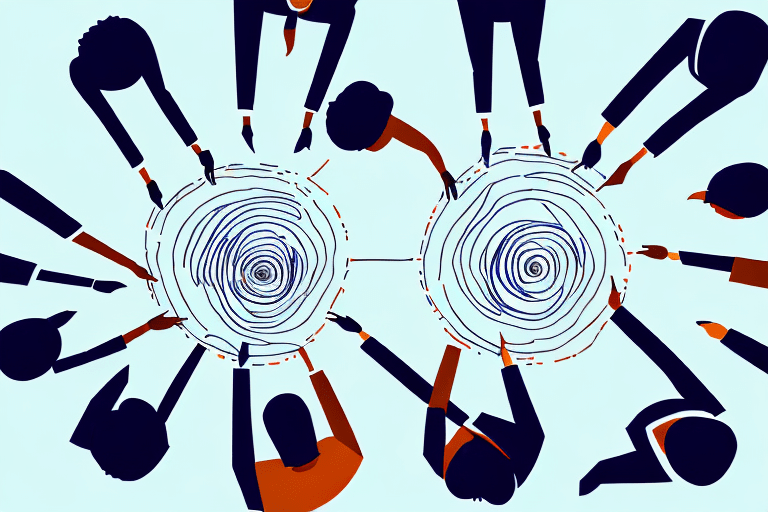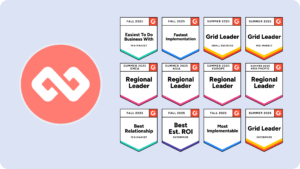Mentoring programs are an effective way for employee resource groups (ERGs) to support their members and foster a sense of belonging. By providing support, guidance, and networking opportunities, mentoring programs can help employees gain valuable skills and contribute to the overall success of the organization.
In this article, we’ll discuss the benefits of mentoring programs for ERGs, strategies for implementing them, how to measure their impact, tips for making the most of them, best practices for connecting mentors and mentees, and how to encourage participation and sustain momentum.
Benefits of Mentoring Programs for Employee Resource Groups
Mentoring programs can be a powerful tool for ERGs. They can provide guidance and support to employers and help them develop new skills and competencies. Additionally, mentoring programs can help foster a sense of belonging by providing members with a dedicated person they can turn to for advice. By investing in mentoring programs, organizations can also help to create a more engaged and productive workforce.
Mentoring programs can also provide valuable networking opportunities. By connecting mentors and mentees, organizations can create a more connected and collaborative atmosphere. Through shared experiences and knowledge, mentors can help mentees develop the skills needed to succeed in their roles. Moreover, mentors can provide mentees with valuable insights into the organization, helping to further develop their understanding of the organization’s culture, values, and goals.
Finally, mentoring programs can help to create a more diverse and inclusive environment. By pairing mentors with mentees from different backgrounds and perspectives, organizations can create an atmosphere where everyone feels respected and valued. This can lead to greater understanding and collaboration amongst employees from different backgrounds.
Strategies for Implementing a Mentoring Program
Implementing a mentoring program requires careful planning. Organizations should start by identifying their goals and objectives for the program. This will help to ensure that the program is tailored to meet the organization’s needs. Additionally, organizations should consider the size of the program, as larger programs may require more resources and personnel to manage them effectively.
Once the goals and objectives of the program are established, organizations should develop a recruitment plan. This plan should include a timeline for recruiting mentors and mentees, as well as criteria for selecting participants. It is also important to establish clear guidelines and expectations for both mentors and mentees. These guidelines should include a description of the roles and responsibilities of each participant, as well as expectations for communication and meetings.
Organizations should also consider providing training for mentors and mentees. This training should provide participants with an understanding of the program’s goals and objectives, as well as an overview of the roles and responsibilities of each participant. It should also provide participants with tips on how to make the most of their mentorship experience.

Case Study: Learn more about how a group of employees at PMI came together to scale a grassroots mentoring program to over 700+ participants.
Challenges of Establishing a Mentoring Program
Establishing a successful mentoring program can be challenging. One of the most common challenges is finding qualified mentors. Organizations should ensure that mentors are well-suited for their roles by providing clear criteria for selection. Additionally, organizations should provide ongoing training and support for mentors to ensure that they are equipped with the necessary skills and information.
Another challenge is ensuring that the program is meeting its goals and objectives. Organizations should develop metrics for measuring the program’s impact on participants. Additionally, organizations should conduct regular surveys to gain feedback from participants on how the program is functioning.
Finally, organizations should consider how to sustain momentum in their mentoring programs. This can be achieved by providing incentives for mentors and mentees to stay engaged with the program, as well as by creating opportunities for networking and collaboration.
How to Measure the Impact of a Mentoring Program
Measuring the impact of a mentoring program is essential in order to ensure that it is meeting its goals and objectives. Organizations should consider tracking the metrics that matter; a combination of qualitative and quantitative data such as relationship quality sentiment, mentoring stories, goals and tasks completed, milestones achieved, and the number of new skills developed by participants – all which can be done successfully with mentoring platforms such as Mentorloop.
Organizations often consider conducting surveys or interviews with participants in order to gain insight into their experience with the program – which is highly advised. This is at the forefront of Mentorloop’s offering, ensuring feedback isn’t left to the end of the program and instead woven into the always-on nature of running a program. With Sentiment and your Program Coordinator Dashboard, you’ll always understand the health of your program. This information can help organizations identify areas where the program can be improved or areas where additional resources are needed.
Tips for Making the Most of a Mentoring Program
Making the most of a mentoring program requires both mentors and mentees to be intentional about their participation. Mentees should take initiative when it comes to setting up meetings, be proactive in asking questions, providing updates on their progress, and expressing gratitude for their mentor’s guidance. Mentors should be open to learning something themselves, gaining perspective from other parties, providing feedback where helpful, and offering advice.
Additionally, both parties should be open to feedback and willing to have honest conversations about their experiences.. Finally, organizations should provide ongoing training and support to ensure that both mentors and mentees are equipped with the necessary skills and information. Again, a tool such as Mentorloop can fill this gap with quality training materials, guidance throughout the journey and assist in running programs asynchronously.
Best Practices for Connecting Mentors and Mentees
In order to ensure successful mentor/mentee pairings, organizations should establish clear criteria for pairing participants that align with the goals of the organization. For example, the ERG may be focused towards supporting LGBTQA+ employees into more senior roles. Matching rules can be set to facilitate these types of relationships in addition to pairing based on the basics such as skills, goals and location etc.
Consider creating opportunities for networking between mentor/mentee pairs to further compound the efforts of your participants and overall program. This could include interactive activities such as group discussions or online forums where participants can share their experiences and insights. Launch events and opportunities to meet every few months can also keep momentum and enthusiasm up.
How to Encourage Participation in Employee Resource Groups and Mentoring Programs
Encouraging participation in ERGs and mentoring programs initially requires clear communication from leadership. When leaders communicate the benefits of participating in ERGs and mentoring programs, as well as provide incentives for participation such as recognition or rewards, recruitment becomes a lot easier.
When there’s some momentum in the program, identifying your Mentoring Champions can be an effective way to further promote the program. Mentorloop makes it easy to surface these participants and on the flip-side, surface those participants that may need a helping hand or wish to be re-matched.
Encouraging participants to refer-a-friend into the program is a great way to build advocacy and like with most programs, any bottom-up approach like this works better than a top-down approach alone.
Additionally, leaders should provide support to ERG members by creating opportunities for them to connect with one another and offer guidance on how they can contribute to the organization’s mission. Finally, leaders should ensure that participation in ERGs and mentoring programs is not limited to certain individuals or groups; rather, they should make it clear that everyone is welcome.
What Role Should Leadership Play in Supporting Employee Resource Groups and Mentoring Programs?
Leadership plays an important role in supporting ERGs and mentoring programs. Leaders should ensure that ERGs are given the necessary resources and support needed to succeed.
Let’s not forget that time is a also a resource here.
Creating space for these programs to operate and be facilitated is key. This includes providing guidance on goal setting and objectives, establishing clear expectations for participation, providing ongoing training on how to make the most of ERGs and mentoring programs, as well as ensuring that ERGs are given adequate time to meet.
Leadership within the ERG plays an important role in fostering collaboration between ERG members. Look into ways to create opportunities for members to connect with one another, share their experiences, and collaborate on projects. It may also benefit to provide recognition or rewards to those who actively contribute to ERGs or mentor others.
How to Sustain Momentum in Employee Resource Groups and Mentoring Programs
Sustaining momentum in ERGs and mentoring programs requires ongoing effort from both leadership and members. Providing incentives for participation such as recognition or awards; can help ensure that members remain engaged with the program.
A platform such as Mentorloop can really take the edge off here. With quality content, behavioural nudges and milestones, participants are supported throughout their mentoring journey and encouraged to take ownership of their own growth and potential.



![[Webinar Kit] Turnover Threat into Talent Triumph: Designing a mentoring program that boosts employee engagement Learn how to design a high-impact mentoring program that helps you achieve your employee engagement goals.](https://no-cache.hubspot.com/cta/default/4058869/interactive-189625368503.png)


